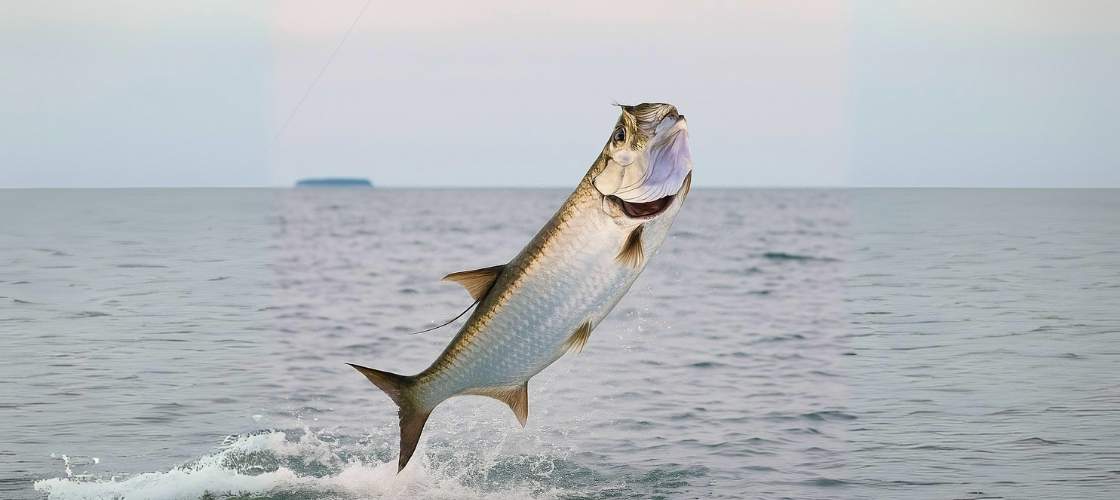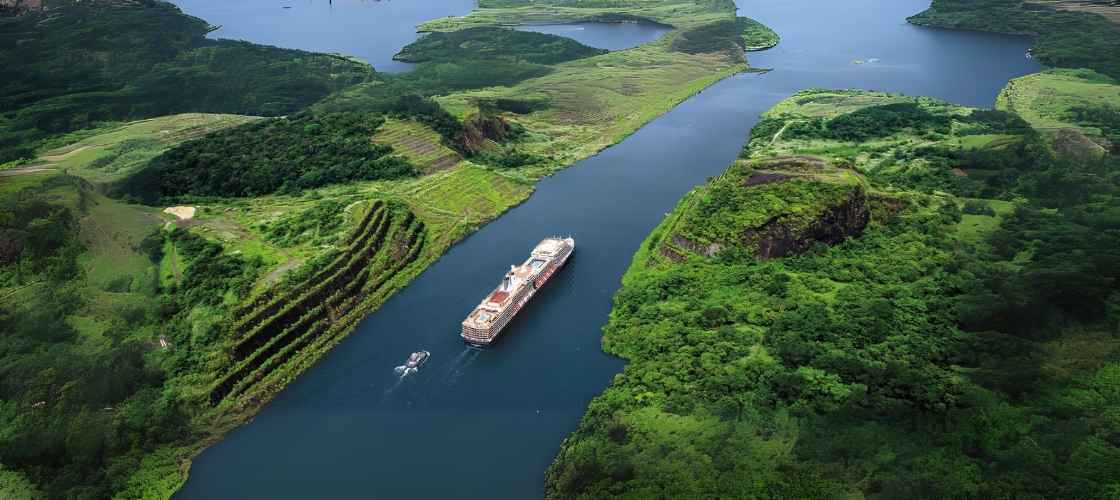Panama Fishing Charters & Tours: Prices & Complete Guide
August 6, 2025 | reading time 10 minutes
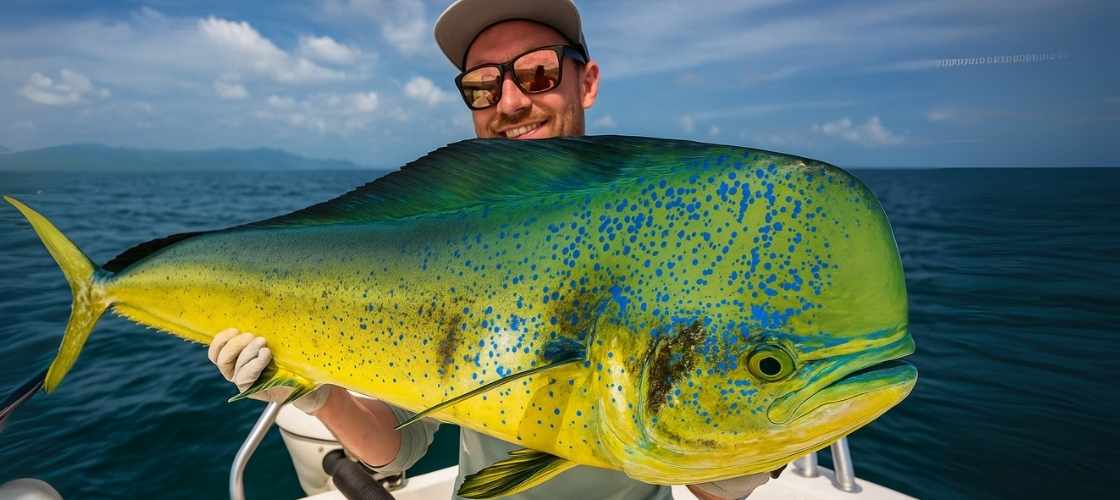
Share the Page :
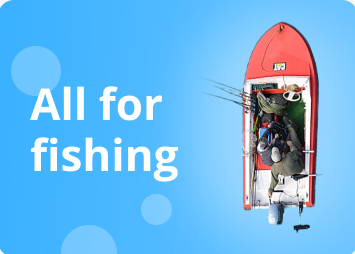
Few destinations in the world rival Panama when it comes to fishing. This small country, bridging the Pacific Ocean and the Caribbean Sea, has an unmatched advantage: access to two oceans and a variety of freshwater lakes and rivers, all within a relatively small territory. In practice, this means you can battle a 200‑pound yellowfin tuna offshore in the morning, chase roosterfish along volcanic coastlines in the afternoon, and still have time the next day to cast for peacock bass in a freshwater lake.
Fishing in Panama is not just about quantity — it’s about variety and quality. The offshore waters are legendary for big‑game species like marlin, sailfish, and tuna. Closer to shore, roosterfish, cubera snapper, and jacks dominate rocky reefs and sandy beaches. Inland, tarpon and peacock bass provide thrilling freshwater options. Add year‑round fishing seasons, experienced captains, and a range of trips from budget to luxury, and you can see why Panama is considered a true paradise for anglers.
On my own trips here, what struck me most wasn’t just the fishing itself, but the setting. Few things compare to fighting a roosterfish while pelicans circle overhead, or casting for tarpon in Gatún Lake while a massive container ship glides by on its way through the Panama Canal. These little moments make fishing in Panama unforgettable.
This guide is meant to be your complete reference. In the following sections, you’ll find in‑depth details on the main species you can catch, the best fishing spots, techniques to try, when to go, average prices, booking advice, travel logistics, and much more.
What You Can Catch in Panama: Complete Species Guide
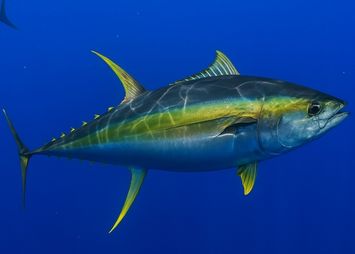
Yellowfin Tuna (Atún Aleta Amarilla)
Yellowfin tuna are the muscle of Panama’s Pacific. These fish are relentless fighters, capable of emptying a reel in seconds. When they’re feeding in schools, the surface boils with energy — dolphins slash through bait balls, seabirds dive from above, and then the water explodes with tuna breaking the surface.
The Gulf of Chiriquí and Azuero Coast are the most famous places for tuna, particularly the Hannibal Bank, Isla Montuosa, Pedasi, and Cambutal. These grounds are known internationally for producing giants over 200 pounds. The power of a yellowfin on spinning tackle is enough to test even the strongest arms.
- Season: Tuna are present all year, but the peak runs from June to October when nutrient‑rich currents push massive schools into Panamanian waters.
- Size: Most fish range from 40–80 pounds, but trophies can exceed 200.
- Best locations: Hannibal Bank, Isla Montuosa, Pedasí, and Cambutal.
- Techniques: Trolling with live bait, drifting chunks, and casting large topwater lures like poppers and stickbaits are the local favorites.
Insider Tips: Look for dolphins and birds. In Panama, big tuna often feed beneath dolphin pods, and when the birds and dolphins are active, you’re almost guaranteed action.

Marlin (Black & Blue)
Catching a marlin is on almost every angler’s bucket list, and Panama delivers some of the best marlin fishing on the planet. Both black and blue marlin roam its Pacific waters, and during the peak season, they’re caught regularly offshore. The fight is legendary — blistering runs, violent head shakes, and gravity‑defying leaps that test every knot, drag setting, and ounce of patience.
The Chiriquí Gulf is world‑renowned for marlin, with Hannibal Bank and Coiba’s offshore waters being particularly productive. Many experienced anglers say Panama offers the best chance to catch a marlin of a lifetime without having to travel to far‑flung islands.
- Season: December to April is prime time, coinciding with dry weather and calmer seas.
- Size: Average catches run 250–600 pounds, with black marlin exceeding 800 not unheard of.
- Techniques: Heavy trolling with artificial lures, rigged ballyhoo, and teasers. Crews often use elaborate spreads to raise marlin to the boat.
Insider Tips: If you’re serious about marlin, plan at least two or three days in Chiriquí — these are long trips offshore, and persistence pays off.
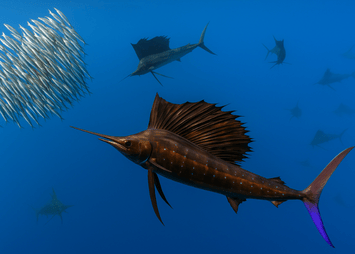
Sailfish
Sailfish are the acrobats of Panama’s bluewater. Sleek and fast, they’re not as massive as marlin but they’re every bit as thrilling to catch. Average fish weigh 70–120 pounds, and when hooked, they launch into repeated jumps, sometimes tail‑walking across the surface.
Sailfish are especially abundant during the dry season. Offshore from Panama City, Pedasí, and Chiriquí, it’s possible to encounter multiple fish in a single day. I once watched a sailfish slice through the water chasing flying fish, its sail fin cutting the surface like a knife. Moments later, the captain pitched a live bait and the fight was on.
- Season: Best from December to April.
- Size: Typically 70–120 pounds.
- Techniques: Trolling small ballyhoo or casting live baits near bait balls. Multiple hookups are common when a school moves through.
Insider Tips: Many anglers target sailfish on lighter tackle for an added challenge, making the jumps even more dramatic.
Mahi Mahi (Dorado)
Mahi Mahi, known locally as dorado, are among the most visually stunning fish in Panama’s waters. Their colors — electric green, gold, and blue — light up when they’re hooked, and they’re aggressive fighters that never seem to tire. On top of that, they’re delicious to eat, making them a prized catch both for sport and the table.
During peak season, dorado often gather around floating logs, debris, or weed lines offshore. When you hook one, don’t reel in immediately — others are likely nearby. On one trip in the Pearl Islands, we pulled a dorado to the side of the boat, left it in the water, and cast lures. Within minutes, two more fish were hooked.
- Season: Available year‑round, but peak fishing is September to November.
- Size: Most weigh 10–30 pounds, with occasional trophies reaching 50.
- Techniques: Trolling skirted lures or casting jigs near floating debris.
Insider Tips: Always keep an extra rod ready. Dorado school in numbers, and hooking one often means a chance for several.
Roosterfish (Pez Gallo)
If there’s a signature inshore fish in Panama, it’s the roosterfish. Recognized by its long, comb‑like dorsal fin, this predator is both visually unique and incredibly strong. Roosters are found year‑round along rocky points and beaches, striking aggressively at live baits and topwater plugs.
Fishing for roosterfish is as much about the setting as the fish itself. In Pedasí and Cambutal, the backdrop is volcanic cliffs and remote beaches. I’ll never forget one day when we slow‑trolled a live blue runner along a rocky point. The line screamed, the rod bent, and a 50‑pound roosterfish burst from the water, dorsal fin flared. It’s a memory that sticks with you.
- Season: Year‑round, with best action December to April.
- Size: Most weigh 20–50 pounds, though 70+ pound trophies exist.
- Techniques: Slow trolling live bait, casting large poppers, and vertical jigging near reefs.
Insider Tips:: Roosterfish are usually catch‑and‑release in Panama. They’re a prized sportfish, not table fare.
Cubera Snapper & Grouper
While less glamorous than marlin or tuna, cubera snapper and grouper provide some of the most brutal fights you’ll experience. These fish lurk around reefs, wrecks, and rocky bottoms. When hooked, they dive immediately for cover. Anglers need heavy tackle and strong arms to stop them. A 40‑pound cubera may be shorter than a tuna, but the raw power feels even more intense.
- Season: Year‑round.
- Size: Typically 30–60 pounds.
- Techniques: Fishing live bait (bonito, mullet) near reefs, or dropping heavy jigs vertically.
Insider Tips: Use the heaviest tackle you can manage — if you give a cubera snapper even a few seconds, it will cut you off in the rocks.
Tarpon (Sábalo Real)
Panama may not be the first place you think of for tarpon, but that’s what makes it special. Unlike Costa Rica, where tarpon waters are crowded, Panama offers quiet rivers and lakes with excellent potential. Tarpon are explosive fighters, famous for leaping high and shaking violently to throw hooks.
Bayano River and Gatún Lake are top spots. The experience of hooking a 70‑pound tarpon in Gatún, while a massive cargo ship drifts past in the background, is surreal. It’s a mix of world‑class sport and quintessential Panama.
- Season: Year‑round.
- Size: Typically 40–100 pounds.
- Techniques: Live bait drifting, fly fishing with large streamers, jigging near river mouths.
Insider Tips: Tarpon can be finicky. Patience is key, but the payoff is worth it.
Peacock Bass (Tucunaré)
Panama’s freshwater crown jewel. Peacock bass aren’t as large as saltwater fish, but pound for pound, they’re some of the hardest‑fighting fish. Aggressive by nature, they smash crankbaits, topwater lures, and flies. Their colors — spotted yellow and black — make them as beautiful as they are fierce.
Bayano Lake and Gatún Lake are the best spots, both easily accessible from Panama City. These trips are great for families or beginners because action is usually steady, and the surroundings are peaceful jungle backdrops.
- Season: Year‑round, best from December to April.
- Size: 2–10 pounds.
- Techniques: Light spinning tackle with crankbaits or topwater plugs.
Insider Tips: Peacock bass often hunt in packs — if one hits your lure, cast again quickly to find more.
Machaca
Often called the “mini‑tarpon” of Central America, machaca are one of Panama’s most exciting freshwater gamefish. They’re not massive, but what they lack in size, they make up for in acrobatics and aggression. Hook a machaca and you’ll see it leap repeatedly, shaking its head wildly, much like a small tarpon. They’re surface feeders, so strikes are often explosive, especially when using topwater lures or even fruit imitations.
The best places to find machaca are the rivers that feed into Bayano Lake and the jungle waterways near the Darién. Anglers love targeting them not only for the fight but also for the unique experience of fishing in lush, tropical settings where toucans, monkeys, and other wildlife are often spotted along the riverbanks.
- Season: Year‑round, though dry season (December to April) offers easier access and clearer water.
- Size: Typically 2–8 pounds, though larger fish can reach 10+.
- Techniques: Light tackle with small crankbaits, poppers, or fly rods. Locals sometimes use fruit or berry imitations since machaca naturally feed on overhanging jungle plants.
Insider Tips: Don’t be surprised if a machaca launches into the air seconds after you hook it. Keep your line tight — they’re escape artists, and many fish are lost mid‑jump and watch out for their teeth when you land them.
Best Fishing Spots in Panama
Panama City & the Bay of Panama
Panama City is one of the only capitals in the world where you can go from a downtown skyscraper to a fishing boat in under an hour. The Bay of Panama is right at your doorstep, offering quick access to roosterfish, snapper, jack crevalle, and snook along the coastline. For those with more time, a full‑day trip can take you offshore for tuna, sailfish, and dorado.
What makes fishing here unique is convenience. I once had a morning inshore trip where we left the dock at 7 a.m., caught roosterfish and jacks by 10 a.m., and I was back at a café in Casco Viejo for lunch. It’s perfect for travelers on short schedules or cruise passengers.
- Best season: December–April for sailfish and roosterfish, June–October for tuna.
Bayano Lake & River
Two hours east of the capital lies Bayano, an underrated gem. Surrounded by jungle, this lake and its river system are home to both freshwater and brackish species. Tarpon, peacock bass, snook, and even tilapia can be caught here. Unlike the chaos of offshore trips, Bayano feels tranquil — birds calling, jungle sounds, and the occasional splash of a tarpon.
Guides here often combine fishing with eco‑adventures, such as exploring the Bayano Caves or visiting Emberá indigenous communities. It’s a great choice if you want to mix culture, nature, and fishing in a single trip.
- Best season: Year‑round, though access is easier in the dry season.
Gatún Lake (Panama Canal)
Imagine casting for peacock bass while a massive cargo ship passes in the background. That’s Gatún Lake. Built as part of the Panama Canal, it’s now one of the best freshwater fisheries in Central America. Peacock bass are the main target, but tarpon, snook, Oscars, and jaguar cichlids are also present.
Trips here are family‑friendly and often half‑day, making them easy to combine with sightseeing in Panama City or a canal tour. The lake’s unique setting — jungle shorelines, historic canal structures, and giant ships — creates an unforgettable atmosphere.
- Best season: All year, with calm water levels December–April.
Pedasí (Azuero Peninsula)
Pedasí, on the Azuero Peninsula, is often called the “Tuna Coast” for good reason. Offshore, yellowfin tuna and dorado abound during their seasons, while inshore waters produce roosterfish, cubera snapper, and jacks.
Pedasí is also a charming town. After fishing, you can stroll its quiet streets, surf at Playa Venao, or enjoy a cold beer at a beachside palapa. For me, Pedasí blends fishing with lifestyle — it’s as much about the town’s atmosphere as the fish you catch.
- Best season: Tuna from June–October, roosterfish all year.
Chiriquí Gulf (Hannibal Bank & Isla Montuosa)
The Chiriquí Gulf is Panama’s big‑game mecca. Hannibal Bank, Isla Montuosa, and Isla Coiba are legendary fishing grounds known worldwide for giant tuna and marlin. This is where you go if you want to test yourself against the ocean’s toughest fish.
Trips here are usually multi‑day and based out of lodges like Tropic Star or Isla Paridas. Days start before sunrise, running offshore into deep blue waters. By mid‑morning, you might be hooked into a 150‑pound tuna or a 500‑pound marlin. For serious anglers, there’s no place like it.
- Best season: December–April for marlin, June–October for tuna.
Pearl Islands
A short ferry or flight from Panama City, the Pearl Islands combine island paradise with great fishing. Roosterfish, dorado, and tuna are all common, and during whale season (July–October), it’s not unusual to fish while humpbacks breach nearby.
This archipelago is also perfect for anglers bringing non‑fishing companions. While you fish, others can relax on white‑sand beaches or snorkel coral reefs. Fishing here feels like a vacation within a vacation.
- Best season: Tuna June–October, dorado September–November.
Coiba National Park
Remote and pristine, Coiba is a UNESCO World Heritage Site. Accessible only by boat, it’s heavily protected and offers incredible fishing in untouched waters. Roosterfish, cubera snapper, and jacks haunt the inshore reefs, while offshore grounds produce tuna, dorado, and marlin.
Fishing Coiba feels like stepping back in time. There are no crowds, no busy marinas — just jungle‑covered islands, turquoise water, and world‑class fishing. Because of strict rules, only licensed operators can fish here, which keeps pressure low.
- Best season: December–April for marlin, June–October for tuna.
Fishing Techniques in Panama
Panama offers a wide toolbox of techniques, each suited to different species and conditions.
Offshore Fishing
This is the classic Panama experience: running 20–60 miles offshore to troll for tuna, dorado, sailfish, and marlin. Boats deploy spreads of lures and teasers, sometimes raising multiple fish at once. Offshore trips demand endurance, but the payoff is massive.
Deep Sea Fishing
The term overlaps with offshore, but in Panama, “deep sea” usually means targeting true giants at legendary grounds like Hannibal Bank. Heavy gear, big lures, and hours‑long battles are the norm. It’s not for everyone, but for trophy hunters, it’s the holy grail.
Inshore Fishing
Closer to shore, inshore fishing is fast‑paced and action‑packed. Roosterfish smash live baits, cubera snapper hit like freight trains, and jacks keep rods bent. Many inshore trips are half‑day, making them ideal for beginners or families.
Fly Fishing
Panama isn’t as well‑known as Belize or the Bahamas for fly fishing, but it has hidden gems. Tarpon and snook in rivers, peacock bass in lakes, and even roosterfish on the fly near rocky points. Bring an 8–10 weight rod and be ready for adventure.
Kayak Fishing
For those seeking intimacy with the water, kayak fishing is growing. Pedasí and Bayano Lake are popular spots, and catching roosterfish from a kayak is an unforgettable thrill.
Trolling
The most common technique, trolling is effective offshore and inshore. It’s beginner‑friendly because the crew handles most of the setup, but when a school of tuna or dorado hits multiple lines at once, chaos erupts — the fun kind.
Prices & Booking
Panama’s fishing scene caters to every budget.
- Half‑day inshore trips: $400–$600 from Panama City, $450–$650 in Pedasí, $250–$400 in Bayano or Gatún.
- Full‑day offshore trips: $700–$1,000 from Panama City, $800–$1,200 in Pedasí, $1,200–$1,800 in Chiriquí, $1,200–$1,600 in Coiba.
- Multi‑day packages: $2,000–$5,000+, often including lodging, meals, and transport.
Most charters include boat, fuel, crew, tackle, bait, and drinks. Extras may include lunches, park permits, and transfers to the marina. Crews generally expect 10–15% gratuity.
Booking Tip: Always confirm what’s included before paying a deposit. Some cheaper trips exclude fuel or bait, making them more expensive than they appear. For transparent prices and verified captains, check PescaYa.com.
Best Fishing Charters in Panama
Choosing the right fishing charter in Panama can make or break your trip. With so many options available, from small local boats to luxury live‑aboards, it helps to know what’s out there and what each type of operator offers. Below are some of the most recognized and reliable charter experiences across the country.
Chiriquí Gulf Charters – Hannibal Bank & Isla Montuosa
In western Panama, the Gulf of Chiriquí is home to giant tuna and marlin, and several high‑quality operators run charters here. Many trips are lodge‑based, with comfortable accommodations on Isla Paridas or the mainland, plus multi‑day offshore packages to Hannibal Bank. These charters specialize in big‑game fishing, with captains who know the waters intimately. If your goal is a 200‑pound tuna or an 800‑pound marlin, this is where you’ll find them.
Panama City Charters – Bay of Panama & Pearl Islands
For those staying in the capital, fishing is surprisingly easy. A range of professional charters operate directly from Panama City, offering half‑day inshore trips or full‑day offshore excursions. Popular targets include roosterfish, snapper, and jack crevalle inshore, with tuna, dorado, and sailfish offshore. Some operators also combine fishing with day trips to the Pearl Islands, making it a great choice for families or mixed groups.
Pedasí Fishing Charters – Azuero Peninsula
Pedasí, known as the “Tuna Coast,” has smaller but highly experienced charter operators who focus on both inshore and offshore action. Roosterfish and cubera snapper are common near the rocky points, while yellowfin tuna and dorado are caught just a few miles offshore. Charters here are typically run by local captains with smaller center‑console boats, offering a more personal experience compared to large operations.
Bayano & Gatún Lake Guides – Freshwater Adventures
For anglers looking beyond saltwater, Bayano Lake and Gatún Lake offer exciting freshwater trips. Local guides run small boats or panga‑style charters to target tarpon, peacock bass, and snook. These trips are usually affordable, easy to organize as day tours, and ideal for families or anglers who want to experience Panama’s inland fisheries.
Tips for Choosing the Right Charter
- Define your goal: Are you after marlin, tuna, roosterfish, or freshwater species? Different charters specialize in different targets.
- Check inclusions: Ask whether fuel, bait, meals, and permits are included in the price.
- Look for experience: Captains with years on local waters know the patterns better than anyone.
- Read reviews: Past client experiences can reveal reliability and quality.
- Book through trusted platforms: Using services like PescaYa.com ensures transparent pricing and verified captains.
Travel & Lodging
Getting There
International travelers arrive via Tocumen International Airport in Panama City. From there:
- Chiriquí: 1‑hour domestic flight to David, then 1–2 hours by road to lodges.
- Pedasí: 5‑hour drive from the capital, or occasional domestic flights.
- Pearl Islands: 30‑minute flight or 2‑hour ferry.
- Coiba: 6+ hour drive to Santa Catalina, then boat transfer.
Where to Stay
- Luxury Resorts: Buenaventura, Isla Contadora.
- Fishing Lodges: Tropic Star Lodge (legendary), Lake Gatun Lodge, Isla Paridas.
- Budget Options: Hotels in Panama City or Pedasí for quick trips.
Travelers often combine fishing with sightseeing: the Panama Canal, Casco Viejo, or rainforest tours. Non‑anglers will find plenty to do while you’re on the water.
Fishing Rules & Legal Aspects
- No license required for tourists fishing with licensed charters.
- Protected areas: Coiba and some marine parks require permits.
- Catch‑and‑release: Mandatory for billfish (marlin, sailfish) and roosterfish; strongly encouraged for large snappers and groupers.
Why Panama is a Top Destination
Panama combines diversity, accessibility, and year‑round action. Where else can you catch marlin offshore, roosterfish inshore, and peacock bass in freshwater within the same week? Add in world‑class lodges, experienced captains, and easy international access, and Panama stands at the top of global fishing destinations.
Frequently Asked Questions (FAQ)
Do I need a license to fish in Panama?
Not if you’re fishing with a licensed charter.
What’s the best time of year?
December–April for marlin and sailfish, June–October for tuna and dorado.
How much does it cost?
Half‑day trips from $400, full‑day from $700, multi‑day from $2,000+.
Is it beginner‑friendly?
Yes. Crews provide gear and guidance.
What else can I do besides fishing?
Whale watching, diving, surfing, rainforest tours, and exploring the Panama Canal.
Conclusion
Panama isn’t just another fishing destination — it’s a complete angling playground. Offshore, tuna and marlin test your strength. Inshore, roosterfish and cubera snapper provide nonstop action. Inland, tarpon and peacock bass give freshwater anglers a thrill. Whether you want a quick half‑day charter or a luxury lodge experience, Panama has it all.
The country’s combination of biodiversity, year‑round seasons, and easy access make it one of the best places on earth to cast a line.
Ready to experience it for yourself? Explore verified trips and book directly with PescaYa.com to start planning your Panama fishing adventure today.
